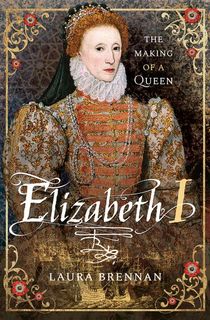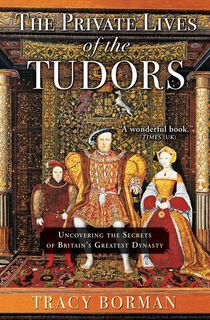Sir Thomas Wyatt the Younger was the son of the diplomat and poet Sir Thomas Wyatt the Elder. Father and son were both destined to make a tremendous impact on English life. Thomas Wyatt the Elder changed England culturally by popularizing the sonnet. Thomas Wyatt the Younger would uproot England politically, by leading a revolt in 1554 that would be remembered as Wyatt’s Rebellion.
But both men, despite their different priorities, shared something substantial in common: concentrating their efforts on a Tudor-Boleyn queen. Thomas Wyatt the Elder had been in love with Anne Boleyn in his lifetime and drew on her as his poetic muse. A generation later, Thomas Wyatt the Younger was obsessed with Anne’s daughter Princess Elizabeth, though not in a romantic sense. He wanted to place her on the throne after toppling her half-sister, Queen Mary I of England, who was about to make a much-dreaded marriage alliance with Spain.
Mary’s groom-to-be was her second cousin, with whom she’d already fallen passionately in love from his portrait. And his religion, which he shared with her, was already the great love of her life that had sustained her through the turmoil of being Henry VIII’s daughter. This was Prince Philip of Spain, the Catholic son and heir of the Holy Roman Emperor Charles V.
Related: 12 Christian History Books That Every World Scholar Should Read
The union between Mary and Philip was organized to mirror that of their shared ancestors, Queen Isabella I of Castile and Ferdinand II of Aragon. Isabella and Ferdinand had sponsored Christopher Columbus’s voyage to America, but what they were more famous for in Europe—or, more accurately, infamous for—was establishing the Spanish Inquisition, the secret police of Spain’s Catholic Church, which hunted down and tortured anyone who strayed from the unified country’s one and only religion.
The people of England at once became terrified and frantic by the news of Mary’s betrothal. What if Prince Philip brought the Inquisition with him to England? What if the couple produced a Catholic child that would continue such a gruesome legacy?
It was the Protestant lords of England who decided to take action, again. They’d already tried to block Mary from the throne at the beginning of her reign by installing their Reformation-raised candidate Lady Jane Grey on it instead. This hadn’t worked; the people sided with Mary then, and Lady Jane Grey, after ruling the country for only nine legendary days, had ended up locked away in the Tower of London, awaiting her royal relative’s pardon. Mary might have forgiven her and freed her if not for the rise and fall of Wyatt’s Rebellion.

Mary I painted by Hans Eworth, 1554.
Photo Credit: WikipediaThe Spanish match was so disliked by the people of England that Wyatt had no trouble gathering forces for his attack. In fact, former supporters of the queen flocked to him in January of 1554 in the county of Kent, deserting their commanders Lord Abergavenny and Sir Robert Southwell. Wyatt was soon leading 3,000 disgruntled English soldiers. The Duke of Norfolk accidentally added more to their numbers when he sent an armed battalion to suppress the rebels. Even more men ditched the queen’s side, and the rebel army swelled to 4,000.
Related: These Bloody Days: The Tower of London in Tudor England
Now the threat was serious and attracting powerful supporters, including Lady Jane Grey’s father, Henry Grey, the 1st Duke of Suffolk. Grey had wanted to make his eldest daughter a queen. Now, he offered his own men and private resources to the cause of replacing Mary with her own half-sister, Princess Elizabeth, with the hope of eventually freeing Jane from the Tower by force and through Elizabeth’s mercy. Though he only managed to round up 140 men to join the army, this was treason enough to justify his capture and later beheading on February 23rd, 1554.
Perhaps the determined Duke of Suffolk would have made a more successful leader of the rebellion than Wyatt, who sabotaged his own enterprise with his overly arrogant demands. Wyatt overestimated his power and influence by demanding the surrender of the Tower of London and the imprisonment of Queen Mary, who was to live under his control and then marry at his own bidding, to a Protestant suitor.
On February 1st, 1554, Mary (temporarily) won back the people’s support with a powerful speech, and on her behalf, London fought off Wyatt and his—in their eyes—unreasonable agenda. When Wyatt’s army marched on Southwark on February 3rd, Mary’s London following of 20,000 volunteers was prepared and waiting for them on London Bridge. Wyatt’s plan to lay siege to London was thrashed, and he was forced to retreat. His army’s last and final stand was a planned attack on Kingston—with the intention of capturing and taking charge of the stronghold St. James’s Palace—but the population of Ludgate, now also against Wyatt, proved an indomitable opponent. Wyatt’s army disbanded, and he was left with no option but to surrender to Mary.
Related: The Six Wives of Henry VIII
Wyatt was as courageous in his imprisonment and at his own execution as he was in his lifetime. He refused to implicate Elizabeth I, knowing full well that any blame laid at her door would lead her straight to the executioner’s block, thus eliminating a major Protestant influence in England. Wyatt was beheaded on April 11, 1554. He was 33 years old.
The Duke of Suffolk’s participation in the rebellion also sealed his daughter Jane’s fate, as if he’d personally guided Queen Mary’s hand to sign the death warrant. Jane Grey was doomed by association with her disloyal father. Mary was bound to do away with her, to set an example to any surviving lords nursing ideas about another rebellion with a Protestant princess at its center. The 16-year-old Nine Days' Queen was executed on the 12th of February 1554, defiant of the Catholic religion in her own scholarly style until the end, carrying an English-Protestant prayer book with her to the executioner’s block. Though she had never been directly involved in the rebellion, Jane Grey was bound by spirit to its staunch anti-Papal ideology, and she is now hailed as a martyr for her faith.

'The Execution of Lady Jane Grey' by Paul Delaroche, 1833.
Photo Credit: WikipediaJane Grey’s tragic death did Mary I of England no favors with retaining the love and respect of the English people, which was already wavering again due to her unpopular looming marriage and fanatical obsession with bringing Catholicism back to England. Wyatt’s Rebellion in general would be a poor and prophetic start to what would be a disastrous tenure for Mary.
In the span of only five years, Mary managed to nearly bankrupt England and earn the country’s lasting mistrust and hatred of Catholic monarchs by burning Protestant citizens at the stake. Her and Philip’s union was, in hindsight, practically pointless, as they left behind no child and heir. Elizabeth was the successor to the throne after Mary’s death in 1558, thus fulfilling the main intention of Wyatt’s Rebellion only a handful of years later.
Related: Behind the Crown: 15 First-Class Books About Royalty
Wyatt, for his part, left behind five sons, none of whom would continue the family tradition of being dangerously associated with a Boleyn-Tudor queen. However, his descendant Sir Roger Twydson was bequeathed an invaluable family heirloom: his Uncle George Wyatt’s autobiography of Anne Boleyn, titled Extracts from the Life of Queen Anne Boleigne, by George Wyat. Written at the close of the XVIth century. The Wyatt family seemed to have never entirely finished with their campaign to uphold the legacy of Anne Boleyn and her daughter, Queen Elizabeth I of England.



